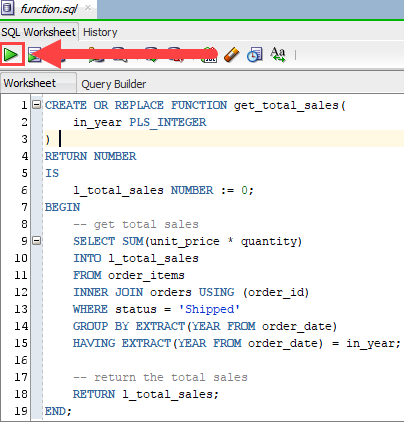

Apex sql query results order software#
For the purpose of this article, we are going to use a tool from ApexSQL software called ApexSQL Plan. You might have a new database and your queries are performing well, but a month down the road when the data has started flooding the database, all of a sudden, things start to slow down. If the query does what it supposed to, great! We can tune it later. Do we think about performance? Not always or as much as we should. Developers often have a tendency to just write queries because we’re against the clock most of the time. This is the main reason why many performance issues are directly connected to poorly designed queries. So, all of this is internal stuff and we already mentioned that SQL Server does an excellent job at managing the statistics and creating execution plans but it can only do as good of a job as the queries we’re passing to it. But this is something that SQL Server does automatically and it also does an excellent job with default settings too, so you don’t have to worry about this except to know that it’s an important aspect. It’s essential to keep these statistics up-to-date as the query optimizer will use them to enforce query plans.

that the query optimizer uses to generate query plans. These statistics include information about columns like: estimated number of rows, the density of pages on disk, available indexes to use, etc. Statistics are an important part of the entire process as they help the query optimizer to make the best guesses when accessing data.
Apex sql query results order full#
Full table scans are similar because they’re scanning every single row in a table.

This can be a helpful performance optimization as index scans are generally performance-intensive because they’re scanning the entire index. More specifically, it tells us what part of a query costs the most CPU time, reads/writes time AKA I/O and gives us the opportunity to fix slow performance queries and to improve those times because, in the real world, we often need to manually examine and tune the execution plans produced by the optimizer to get even better performance.įurthermore, these plans display helpful graphical information that shows how SQL Server is accessing data if it’s doing a full table scan vs full index scan vs index seek. You might be wondering why we need to know all this internal stuff and the simple answer is that it gives us an insight into what’s happening under the hood. It shows how a query will be or was executed. If you’re a network guy like me, look at it as the number of hops for packets through a network which data must pass between source and destination. SQL Server’s query optimizer does an excellent job by generating a physical model of the most efficient route to the data. Such a plan is created when a query is accepted by SQL Server and it’s coming from either an application or it’s coming from us when testing query performance. It’s basically a map that SQL Server is drawing to the shortest ideally the most efficient path to the data in our database. Hopefully, this article will help you if you ever find yourself in a situation when a user gives you a call at 4:30 PM on Friday and says, “this application is too slow” or you just want to test and optimize your queries.Ī query execution/explain plan AKA execution plan is an ordered set of steps used to access data in a SQL Server. Let’s face it, querying data is not just writing Select (*). This is something that we can design with a focus on query performance, but we can also find and troubleshoot slow performance queries by identifying bottlenecks in them. Therefore, we need to make sure that our queries are performing well. In the database world, this is very important.

Often even clicking a single button requires query performance optimization because everything that’s actually happening under the hood is just SQL Server pulling the data from a database. The SQL Select statement is the primary mechanism to retrieve data from a database. As computers get faster and technology moves forward users get more impatient and want things right now without having to wait. Nobody likes to click a button, go get a coffee, and hope the results are ready. No matter if we’re talking about applications in which users click buttons to display data or if we’re writing a query directly into let’s say SQL Server Management Studio (SSMS).


 0 kommentar(er)
0 kommentar(er)
